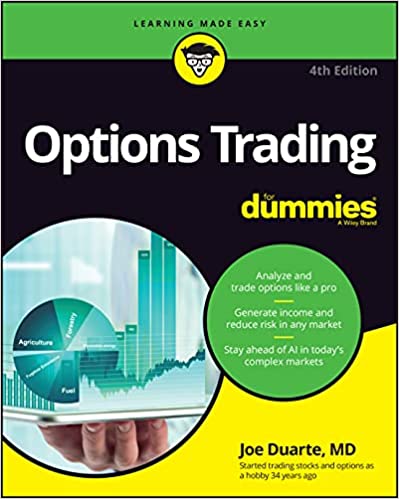It Could Be Party Time. Bullish Seasonals and a Potential Bond Yield Reprieve. Time to Find Value in an Extended Market.
November 24, 2024
That giant swooshing sound you may hear could be Santa’s sled revving up for a stock rally, with a few wrinkles.
It’s that time of year on Wall Street, where the so called Santa Claus rally takes over the market and sentiment turn bullish. And while I’m all for rising stock prices, and I’m not fighting the tape, I can’t help but feel just a bit uneasy about the current situation. I’m not as concerned about a market crash as I am about the market entering a lengthy consolidation where it’s hard to trade any trend, up or down, creating a frustrating environment.
That’s because stocks have come a long way in 2024 and the potential for higher prices is less than it would be after a substantial correction. As a result, it’s a good time to focus on specific stocks and sectors which are providing some value and have the best shot at delivering better returns than those in areas which are near their recent highs.
In addition, there are still plenty of potential geopolitical problems and potential post-election surprises which could create volatile trading conditions.
But my concerns can wait a bit. Certainly, the week of Thanksgiving gets the nod as one in which stocks tend to rise. But as December approaches, even with the traditional bullish tendencies, bumpy trading may resume as the macro statistics – jobs, CPI, and the final Fed meeting of the year arrive.
Still, we don’t fight the tape. If stocks are rising, we want to own them. Thus, we focus on liquidity, and we search for value.
Liquidity Watch Improves
The National Financial Conditions Index (NFCI) turned lower last week. This is a bullish sign which means that the liquidity in the financial system is once again rising. The rally in stocks and a better tone in the bond market coincided with the rolling over of the NFCI. Inside the index, only four components are tighter than average while 101 are looser than average.
Ten Year Note is Still Stuck Between 4.3 and 4.5%.
Bond traders have been looking for a reason to buy. And some of them may have found it, at least in the short term. The U.S. Ten Year Note Yield (TNX) dipped after its most recent tag of the 4.5% resistance area while not quite falling below 4.3%. On the bullish side, the recent new highs on TNX have not been confirmed by new highs on the RSI, which means that the upside momentum for yields with each consecutive push up has been lessened. This type of trading pattern is usually bullish. To confirm this bullish tone, though, we need to see a break below 4.3%.

Mortgage rates are also looking to top out but remain near their recent highs, as they are tied to TNX. Get more details on this topic here. If you’re not getting my FREE weekly real estate and interest rate updates, you can sign up here.

Bitcoin Keeps Rocking.
Bitcoin (BTC/USD) continues to rally, even after coming a long way in a short period of time. And although it’s due for a pause, a move over $100,000 could well pave the way for a spectacular period in the cryptocurrency world.
BTC is clearly overbought with the RSI trading well over 70. But it could stay overbought for quite a while as those who have missed the rally play catchup. Meanwhile both the ADI and OBV lines show that money is moving in at an astronomical rate. I’ve recently added two Bitcoin related trades, one of which has run its course. I will be adding a new Bitcoin trade at Substack on 11/25/24.

Don’t Count Technology Out
In the current market, the usual leadership technology is lagging. But that’s why it’s worth paying extra attention to the sector. The VanEck Vectors Semiconductor ETF (SMH), is consolidating near important support. Note the proximity of prices near the 20, 50, and the 200-day moving averages as well as a large VBP bar near $240. In addition, the OBV and ADI lines are starting to turn up as money is moving in.
Energy Gets a Boost
Another sector which is seeing some positive action is energy. The VanEck Vectors Oil Service ETF (OIH) has just crossed above its 200-day moving average and a three bar VBP cluster, which suggests it’s about to move higher. ADI and OBV are also rising as money moves in.

Patience in Homebuilders is Likely to Pay Off
I’ve been adding homebuilders to long term portfolios, while acknowledging this is a long term trade which will require patience. On the other hand, there is a stealthily unfolding dynamic in the sector which could light a fire under this area of the market. You can get the details here.
The short version is that large homebuilders are steadily gobbling up midsized local and regional builders, especially in areas where populations are steadily growing – the South and the Sunbelt. This is growing their market share and will likely boost earnings in the not too distant future, especially if interest rates fall. Of course, this is also a boost given the fact that supply and demand favor the homebuilders.
 would be expected, the iShares Home Construction ETF (ITB) is showing signs of life as bond yields fall. Yet, even if bond yields turn higher and this proves to be a short lived rally, this improvement in homebuilders is proof that, as I’ve been saying, a sustained drop in bond yields and mortgage rates will once again breathe life into housing stocks. would be expected, the iShares Home Construction ETF (ITB) is showing signs of life as bond yields fall. Yet, even if bond yields turn higher and this proves to be a short lived rally, this improvement in homebuilders is proof that, as I’ve been saying, a sustained drop in bond yields and mortgage rates will once again breathe life into housing stocks.
REITs Show Signs of Life
Another contrarian sector which is interesting is real estate (REITs). The iShares U.S. Real Estate ETF (IYR) just crossed above its 50-day moving average. I recently added a new REIT trade, which you can check out here.

If you’re an ETF trader, consider, Joe Duarte’s Sector Selector. It’s FREE with your monthly membership to Buy Me a Coffee. Sign up here. If you’ve been thinking about starting a day trading career, my new book “Day Trading 101” will get you started on the right foot. For short term intermediate momentum, and frequent option trades, visit the Smart Money Passport.
NYAD Nears New Highs. Indexes Hold Key Support.
The New York Stock Exchange Advance Decline line (NYAD) is once again knocking on the door of new highs. This is good news for the market, especially during the months of November through January. The RSI is just above 50 which gives NYAD, and the market room to run.

The S&P 500 (SPX) seems to be ready to challenge 6000 once again. The 50-day moving average is support near 5700.

The Nasdaq 100 Index (NDX) remains range bound. On the positive side, lower bond yields also seem to boost this index. Support at 20,000-20,500 (50-day M.A. and large VBP bar) remains reliable.

VIX Holds Below 20
The CBOE Volatility Index (VIX), is remained below 20 which is a bit of a positive divergence given the recent reversal in stocks.
VIX rises when traders buy large volumes of put options. Rising put option volume leads market makers to sell stock index futures to hedge their risk and leads markets lower. A fall in VIX is bullish signaling lower put option volume, eventually leads to call buying which is bullish as it causes market makers to buy stock index futures raising the odds of higher stock prices.
To get the latest up to date information on options trading, check out “Options Trading for Dummies”, now in its 4th Edition – Available Now!
#1 New Release in Options Trading
Now in Audible Audiobook Format
Options Trading for Dummies (4th Edition) Audible Audiobook – Unabridged
Joe Duarte MD (Author), Terrence Kidd (Narrator), Tantor Audio (Publisher)
4.5 out of 5 stars 61 ratings
#1 New Release in Investment Analysis & Strategy
# 1 New Release on Options Trading

Good news! I’ve made my NYAD-Complexity - Chaos charts featured on my YD5 videos, and a few more available here.
Joe Duarte is a former money manager, an active trader and a widely
recognized independent stock market analyst since 1987. He is author
of eight investment books, including the best selling Trading
Options for Dummies, rated a TOP
Options Book for 2018 by Benzinga.com - now in its third edition, The
Everything Investing in your 20s and 30s and six other trading books.
Meanwhile, the U.S. Ten Year note yield (TNX) is trading in a The
Everything Investing in your 20s & 30s at Amazon and The
Everything Investing in your 20s & 30s at Barnes and Noble.
A
Washington Post Color of Money Book of the Month is now available.
To receive Joe’s exclusive stock, option, and ETF recommendations, in
your mailbox every week visit https://joeduarteinthemoneyoptions.com/secure/order_email.asp.
JoeDuarteInTheMoneyOptions.com is independently
operated and solely funded by subscriber fees. This web site and
the content provided is meant for educational purposes only and
is not a solicitation to buy or sell any securities or investments.
All sources of information are believed to be accurate, or as otherwise
stated. Dr. Duarte and the publishers, partners, and staff of joeduarteinthemoneyoptions.com
have no financial interest in any of the sources used. For independent
investment advice consult your financial advisor. The analysis
and conclusions reached on JoeDuarteInTheMoneyOptions.com are the
sole property of Dr. Joe Duarte.
| 




